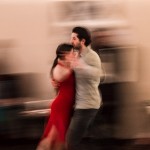Dancing To The Music
There has been a lot said lately about dancing to the music. In Tango we have many options, and that can cause some people great trepidation. The main thing is to listen to and peruse a great library of orchestras so you know and understand the music. The more subtleties you know, the more comfortable you are to interpret the music into your dance.
Each orchestra has a different style, and each seasoned dancer whom has chosen their style, may prefer one rather than the other because they fit their movements, or tastes. For example, a more rhythmic orchestra may be preferred over a more melodic, or dramatic ensemble.
Without getting to technical, what are our choices of dancing to a piece of music? I like to break it down as follows. First the beat, which should be obvious, but may need further explanation at a later time. Another would be the melody or phrasing of the music. Some may call this the musical structure, or sentencing of the piece. We may also dance to the lyrics or poetry. If we do not understand the language this can be difficult. There are ways to overcome this problem. We do have resources to look up any piece, and get a translation of the words to your native language. Without that, you may be able to feel the sentiment of the words or the emotion of the singer. Another avenue to consider when interpreting the music to your style is the instrumentation. For example, if the violin is crying out to you, what would it move you to do? How about a run of the piano, or the breathing of the Bandoneon?
Whatever it is that you dance to, there must be a musical choice in each step you take, you must allow the music to move through your body in some way and convey it to your partner. If this is intimidating at first, perhaps you are too focused on the steps. Make the music a priority. You, the music, your partner all become the dance.

Leave A Comment
You must be logged in to post a comment.